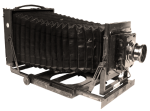Video Formats
Some of the more significant steps in video recording…
Reel tape recording
The first video tape recorder was released by Ampex in 1956 using 2 inch wide tape. It used a form of recording called quadrature scanning, meaning that a rotating drum with 4 heads scanned at right angles across the width of the moving tape. It was not capable of playing still frame or slow motion etc. and was very difficult to edit but was a radical change from a film only play and record system for television.
The next generation of video recorders used helical scan recording where the video recording heads are placed within a tilted spinning drum so that each of the heads scans a track diagonally across the tape, each track equating to one line of the video picture and this principle is used in video tape recorders of today.
Video cassettes
In 1971 Sony introduced the U Matic video cassette recorder. It was intended to be aimed at the consumer market and is claimed to be the first video cassette format. It was a little too bulky and expensive for most people but like 16 mm film before, it quickly gained popularity as an educational and training medium. Many businesses and organisations were now able to produce their own videos in house.
The Betamax, released in 1975, and VHS, in 1976, video cassette recorders became the popular video cassette formats of the day. It also opened up a mighty war of the formats. A great deal was said about either that was both true and false. But it is generally agreed today that Betamax was the superior format. It is telling that for some time after Betamax disappeared from the consumer market, it was still being used by the television broadcast industry as a medium to circulate program previews.
The Betacam pro video camcorder was introduced by Sony in 1982 as a professional medium but based on Betamax technology. This is still being used in its many variations today and particularly as a digital format.
The ubiquitous Mini DV video camcorder started to appear in 1994 and grew to be the preferred amateur camcorder format and probably far more so than 8 mm film and even 8 mm video ever was. It also drew many people into serious video production and some equipment in this format challenged professional borders for many years.
With the first HDV video camcorder released by JVC in 2003 the age of much more affordable high definition was upon us. This first camcorder, although showing good quality, is now considered to be more of a ground breaker that never caught on very well. But with the release of Sony’s first HDV camera in September 2004 all this changed.
Digital formats
More recently domestic high definition video recording has been based upon AVCHD and similar standards, recording to SD memory cards. The resulting recording contains lots of data and requires a very good computer for editing, but the quality of some HD formats can be very high and may even rival film.
With an ever increasing range of models from many manufacturers high definition formats are set to become the video formats of the masses and small independent producers. Indeed, they are generally completely changing the face of HDTV television content.
Other formats and recording mediums are slowly gaining popularity. Professional formats include recording mediums such as solid state electronic memory and optical disc recording, many with resolutions capable of rivaling high quality cinema film.


